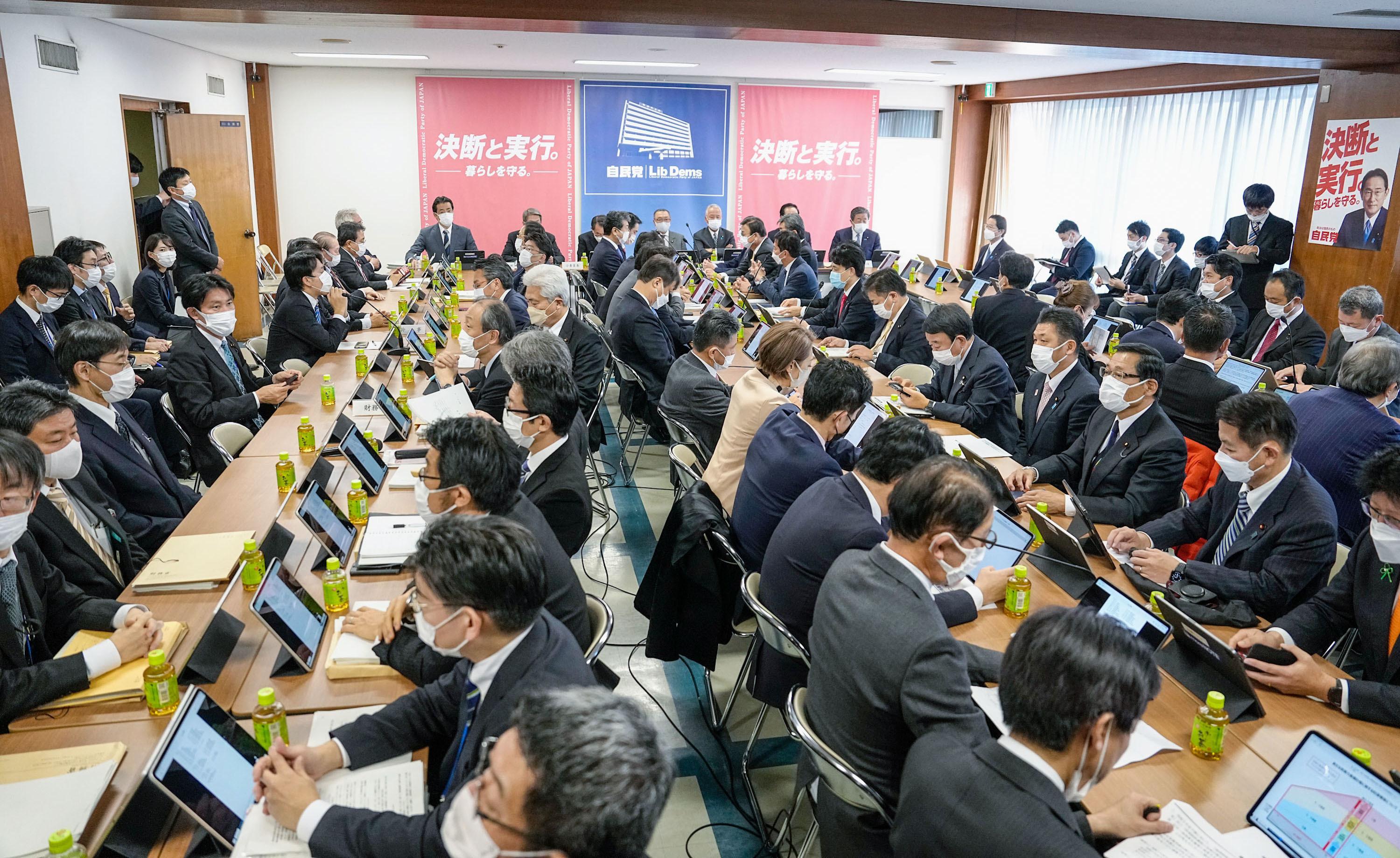
Restoring sustainability to human society, asserts Research Director Keiichiro Kobayashi, will require giving future generations a voice in the decisions we make today.
* * *
Future Design is a concept for a new political system that takes the needs of future generations into account. When designing a new political system, we need to justify it to be accepted by the general public as a matter of political philosophy. First, I will briefly describe the nature of the intergenerational problems we face today and the idea of Future Design as a factor in making important decisions that are likely to affect the future of our society and the planet. I will then present a theory, or political philosophy, that may help us to convince the public of the necessity of Future Design.
Intergenerational Problems
The two biggest intergenerational problems we face today are the sustainability of government debt and the impact of global warming. Dealing with these intergenerational issues can be likened to an investment project with an ultra-long-term time horizon. The current generation needs to pay the cost of investment now, in exchange for nothing, whereas the future generation, who are not born yet, will receive the returns of the investment in the far future.
Consider the sustainability of government debt. Unsustainable increases of such debt can be seen in many countries. If taxes are raised sufficiently to scale back public debt, it will become a heavy burden on the current generation, but future generations will benefit from a stable economy and will not need to worry about a government default.
Global warming can be viewed from a similar perspective. If the current generation reduces its emissions of greenhouse gases, industrial activity will suffer heavily from a shortage of energy, but future generations will be able to enjoy a stable climate thanks to the intergenerational investment.
Our political systems—democratic or otherwise—are by nature unable to properly implement intergenerational investments to protect the interests of future generations. We are constrained by the fact that only those of us alive today can make investment decisions; future generations cannot, as they have yet to be born. Under such constraints, what are the best decisions the current generation can make?
We know that we will not obtain any benefits from intergenerational investment. We also know there is no penalty for failing to invest in the future. Since most of us place our own interests first, we will tend to refrain from making intergenerational investments and instead heap the costs of our excesses on to future generations.
Future Design and Its Goal
Restoring sustainability to human society will thus require giving future generations a voice in the decisions we make today. This is the basic idea behind Future Design. It can be thought of as a simple “role-playing game” in political decision-making. Future Design researchers call someone playing the role of a member of the future generation an “imaginary future person,” or, if it is a group of people, an “imaginary future generation.” These role players (such as a government agency for future generations) are called upon to influence political decisions as actors representing future generations.
Experiments have shown that people who are given the role of the future generation will think and act as if they are actually people living in the future. There is a good example of a Future Design experiment in the town of Yahaba in northern Japan. The experiment showed that members of the imaginary future generation clearly thought differently from those in the present generation.
In the experiment, two types of groups were formed: the current generation group and the future generation group. Each group consisted of five or six people who were randomly selected from among Yahaba residents. One topic of their discussion was the water supply, which operated with a surplus in the years prior to the experiment. The current generation group naturally concluded that the price of water should be lowered and that the surplus should be shared among the residents. The future generation group thought differently. The facilities and equipment for the water supply may need to be replaced in the coming decades, they reasoned, so the town office should keep the surplus to be used when the need for public-works spending arises. The participants concluded that the price of water should be set at an even higher level to secure enough funds for future investments. Based on the results of this experiment the Yahaba town office reached a decision to actually raise the fees charged for the water supply.
The goal of our Future Design project is to create an imaginary future generation group within the government as a permanent organization.
The idea of a government agency representing the interests of future generations is by no means new. In the area of government debt, for more than a decade, the International Monetary Fund and the Organization of Economic Cooperation and Development have recommended that governments create “independent fiscal organizations” that are—like central banks—politically neutral to make long-term forecasts of government debt. There exist fiscal oversight bodies in major member states of the European Union, and they form a network called the Independent Fiscal Institutions Network.
In Japan, Tatsuyoshi Saijo (Tokyo Foundation for Policy Research senior fellow and professor at the Kochi University of Technology) has proposed the creation of a Ministry of the Future in the central government and a Division of the Future in each government agency and local municipality.
Political Philosophy for Future Design
The goal of Future Design is to create a new government agency that represents the generations of the future. This is a political goal, so a new political philosophy is needed to convince people of the importance and viability of Future Design. Some may oppose the idea of creating an agency that could curtail the benefits they now enjoy. To convince the public and win broad support, the reforms we advocate must be legitimate, just, fair, and reasonable. We have thus chosen the concept of the social contract as the basic framework of our political philosophy, drawing on the work of Thomas Hobbes, John Locke, and Jean-Jacques Rousseau, who argued that people who disagree with one another can still agree to establish a central government as a mediating agent.
John Rawls, a more recent theorist of the social contract, argued that a social security system can be justified from the viewpoint of people in the “original position,” a fair and impartial point of view adopted behind a “veil of ignorance” by parties to a hypothetical social contract. We believe that a government agency of the imaginary future generation can also be justified when viewed from the original position.
The following argument is a tentative theory of a new social contract, with two key ingredients: “sympathy” and “veil of ignorance.” Sympathy explains why a government organization for an imaginary future generation would be effective. The veil of ignorance is an intellectual device John Rawls invented to determine the level of inequality that society would find acceptable. A Rawlsian veil of ignorance alone is not enough to solve intergenerational problems; another vital ingredient is sympathy.
At the original position, where people are shielded by a veil of ignorance, they agree to leave sufficient resources to the next generation. Rawls calls this agreement “just savings.” On the one hand, people know in advance that when the veil of ignorance is lifted, the promise of just savings will not be fulfilled under current democratic institutions. This is because there are no benefits for the current generation in making intergenerational investments. Should there be a government agency of the imaginary future generation, on the other hand, people would know that it would ensure that the current generation remains committed to keeping its just-savings promise. Mutual sympathy will drive the members of the agency to work hard for future generations. And knowing this, people behind a veil of ignorance will be amenable to creating a government agency of the imaginary future generation.
Details of a New Social Contract
In the Theory of Moral Sentiments, Adam Smith emphasized that sympathy strengthens morality by creating an “impartial spectator” inside of one’s mind. Sympathy explains why we can expect that a government agency of the imaginary future generation, which is a group of people living today, will truly act for the sake of people who are as yet unborn. This is because in such a government agency, its members are given the role of representing future generations, which rests on an internal sense of justice within the group: If you work hard for the future, you will be praised and obtain immense sympathy from colleagues. In this way, sympathy strengthens the shared belief among agency workers that working hard for future generations is of great value and conforms to their sense of justice. Thus, the members of the agency will work for future generations with strengthened feelings of altruism.
I agree with the Rawlsian thesis that the social system chosen by people behind a veil of ignorance is just, fair, and reasonable. Rawls invented this notion to examine forms of acceptable inequality, arguing that society would be fair if its institutions were created by people in the original position, without foreknowledge of such personal attributes like health, wealth, talent, social status, gender, and ethnicity. If they are ignorant of what their attributes will be, they will be inclined to choose institutions that are fair and acceptable to all members of society.
Rawls argues that people will agree to a certain level of inequality if it conforms to the Max-Min Rule, that is, they will accept inequality if it maximizes the utility of the most unfortunate out of fear of being born among them. This is how the Max-Min Rule justifies the existence of a social security system.
Applying this argument to the intergenerational issue yields the “just savings” principle. The Max-Min Rule implies that people will agree to maximize the utility of the most unfortunate generation, for people behind a veil of ignorance do not know in which generation they will be born. They will be afraid of being among the most unfortunate, so they will advocate having each generation leave some resources to the next. It is this just-savings principle that encourages fiscal discipline when it comes to government debt and reductions in greenhouse gas emissions in the context of global warming.
If the just-savings principle is working, there is no problem. But intergenerational investment may not be implemented due to a “time inconsistency” issue. That is, while people behind a veil of ignorance may willingly agree to bequeath resources to the next generation to support the most unfortunate, once the veil is lifted—and knowledge sinks in that theirs is not a particularly troubled generation—they will be free to renege on the promise of just savings without a penalty, potentially depriving future generations of needed benefits. This is the time inconsistency problem: people will agree to leave resources to the next generation ex ante (behind the veil of ignorance), but they will not keep this promise ex post (after the veil is open).
Behind a veil of ignorance, sympathy will enhance intergenerational altruism and mitigate the time inconsistency problem. People will agree to create a government agency of the imaginary future generation because this will strengthen their belief in intergenerational justice by systematically enhancing sympathy within members of the agency. Those members will act earnestly for the interests of future generations and seek to change the political decisions of the current generation. People will agree to create a government agency of the imaginary future generation because they know that it will force a commitment to implementing just savings. In this way, we can justify Future Design, as Rawls justified the social security system.
Adapted from a presentation at “Future Design: Exploring Affirmative Futures through an Intergenerational Outlook,” a workshop held at Arizona State University on January 8–9, 2019.


